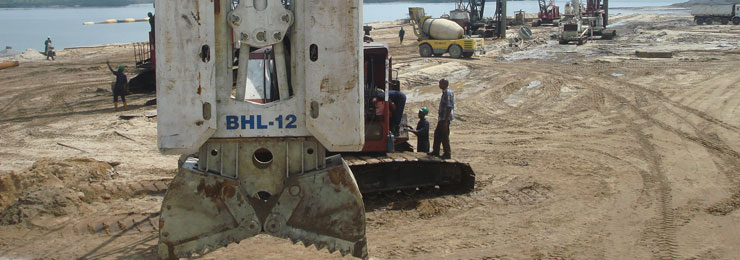
EXCAVATION SUPPORT
Diaphragm walls are used to form vertical shields with minimal thickness in comparison with their length.Diaphragm walls are used for the following applications:
- supporting works for deep vertical excavations (underground lines, harbour wharfs, etc.).
- impermeable barriers (shield below dams, dumps wallings, etc.).
- deep load-bearing elements (isolated tracts) instead of piles.
Depending on the application, the material forming the diaphragm wall could be self- hardening mixtures or reinforced concrete. The shapes and sections generally used are as follows:
- linear diaphragm walls formed by a sequence of adjoining elements having a rectangular section with thickness between 600 and 1200 mm, and width varying from 2 to 3.5 metres.
Concrete sheet piles: Precast concrete elements, supplied with thickness of 20 and 30 cm and various lengths up to 17m, are driven into the soil by means of hydraulic or electric vibrators. The sheet piles are sealed with a special joint successively grouted and connected together by beams, anchored with tie backs if required by design. The availability of Trevi precast facilities in different areas of the country, the flexibility and durability of the system and the easy transportation are the greatest advantages of this method, which is suitable to form continuos and sealed walls for excavation support, soil stabilisation and shore protections.
Steel sheet piles are driven into the soil by means of an hydraulic, diesel or vibro hammer according to the geometry of the projects and the working environment. Connected together with mechanical joints, they are a suitable system to form barriers, continuos sealed walls for excavation support, soil stabilisation and shore protections, where design conditions require depths deeper than 17m.




 Websolute
Websolute